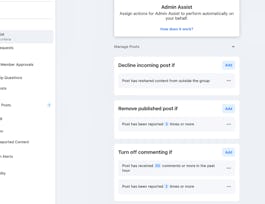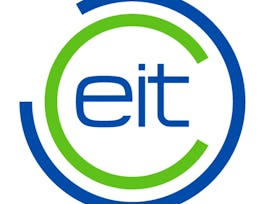Welcome to "Requirements Writing". As the title indicates, over the next four weeks, we will be looking at the important task of writing of text-based requirement statements. The course takes you step by step through the rules for writing requirements statements in accordance with the "Guide for Writing Requirements" published by the International Council on Systems Engineering (INCOSE).


Requirements Writing
Taught in English
Some content may not be translated
17,312 already enrolled
(326 reviews)
Details to know

Add to your LinkedIn profile
5 quizzes
See how employees at top companies are mastering in-demand skills


Earn a career certificate
Add this credential to your LinkedIn profile, resume, or CV
Share it on social media and in your performance review

There are 5 modules in this course
Welcome to the Requirements Writing MOOC. The course is run over five weeks. During the first four weeks you will complete four modules (one each week) that progressively move through the rules for writing requirements. Each week, you will have the opportunity to undertake a module quiz as many times as you wish to ensure that you have a grasp on the module material. The quizzes are drawn from a large set of questions, so each time you do the quiz, you will see new questions to test your knowledge. In Week 5, there will not be any presentations but you will have time to review the four modules and practice the module quizzes again so that you are prepared for the course exam.
What's included
2 videos5 readings1 quiz
As we saw in the last module, the writing of good requirements is essentially about removing the ambiguity from the resulting statement. We first identified a suitable structure for the statement and we then began to look at the rules that we should keep in mind when writing requirements. In this module we continue to move through the rules, particularly as they relate to the use of vague and superfluous words.
What's included
1 video1 quiz
In the last module we addressed more of the rules we need to follow in order to develop good requirement statements. In particular we looked at the rules that relate to the use of vague and superfluous words. In this module we address more of those rules, starting with some more rules about other words we should avoid when writing requirements. In particular, we look at avoiding conjunctions unless we introduce a formal convention for logical conditions. We also discuss why we must avoid unbounded statements and escape clauses.
What's included
1 video1 quiz
In Module 4, we complete our look at the rules for writing requirements. In particular, we focus on when we should and should not be precise; how to use units, ranges and tolerances; and some final things to avoid (such as cross-references, including pronouns, and the use of “not” in forming negative requirements).
What's included
1 video1 quiz
This final module allows you some time to revise the first four modules and the quizzes in order to prepare for the completion of the course exam. The exam questions are drawn from the same large pool of questions as the quizzes—so you should not be surprised by the test questions since you will have seen something very similar if you have prepared by completing the quizzes a sufficient number of times. We also provide some addition information regarding the Master of Systems Engineering program at UNSW Canberra.
What's included
2 videos1 quiz
Instructor

Recommended if you're interested in Electrical Engineering

Coursera Project Network

Eindhoven University of Technology

Coursera Project Network
Why people choose Coursera for their career




Learner reviews
Showing 3 of 326
326 reviews
- 5 stars
70.85%
- 4 stars
22.08%
- 3 stars
5.52%
- 2 stars
0.92%
- 1 star
0.61%

Open new doors with Coursera Plus
Unlimited access to 7,000+ world-class courses, hands-on projects, and job-ready certificate programs - all included in your subscription
Advance your career with an online degree
Earn a degree from world-class universities - 100% online
Join over 3,400 global companies that choose Coursera for Business
Upskill your employees to excel in the digital economy
Frequently asked questions
Access to lectures and assignments depends on your type of enrollment. If you take a course in audit mode, you will be able to see most course materials for free. To access graded assignments and to earn a Certificate, you will need to purchase the Certificate experience, during or after your audit. If you don't see the audit option:
The course may not offer an audit option. You can try a Free Trial instead, or apply for Financial Aid.
The course may offer 'Full Course, No Certificate' instead. This option lets you see all course materials, submit required assessments, and get a final grade. This also means that you will not be able to purchase a Certificate experience.
When you purchase a Certificate you get access to all course materials, including graded assignments. Upon completing the course, your electronic Certificate will be added to your Accomplishments page - from there, you can print your Certificate or add it to your LinkedIn profile. If you only want to read and view the course content, you can audit the course for free.
You will be eligible for a full refund until two weeks after your payment date, or (for courses that have just launched) until two weeks after the first session of the course begins, whichever is later. You cannot receive a refund once you’ve earned a Course Certificate, even if you complete the course within the two-week refund period. See our full refund policy.



